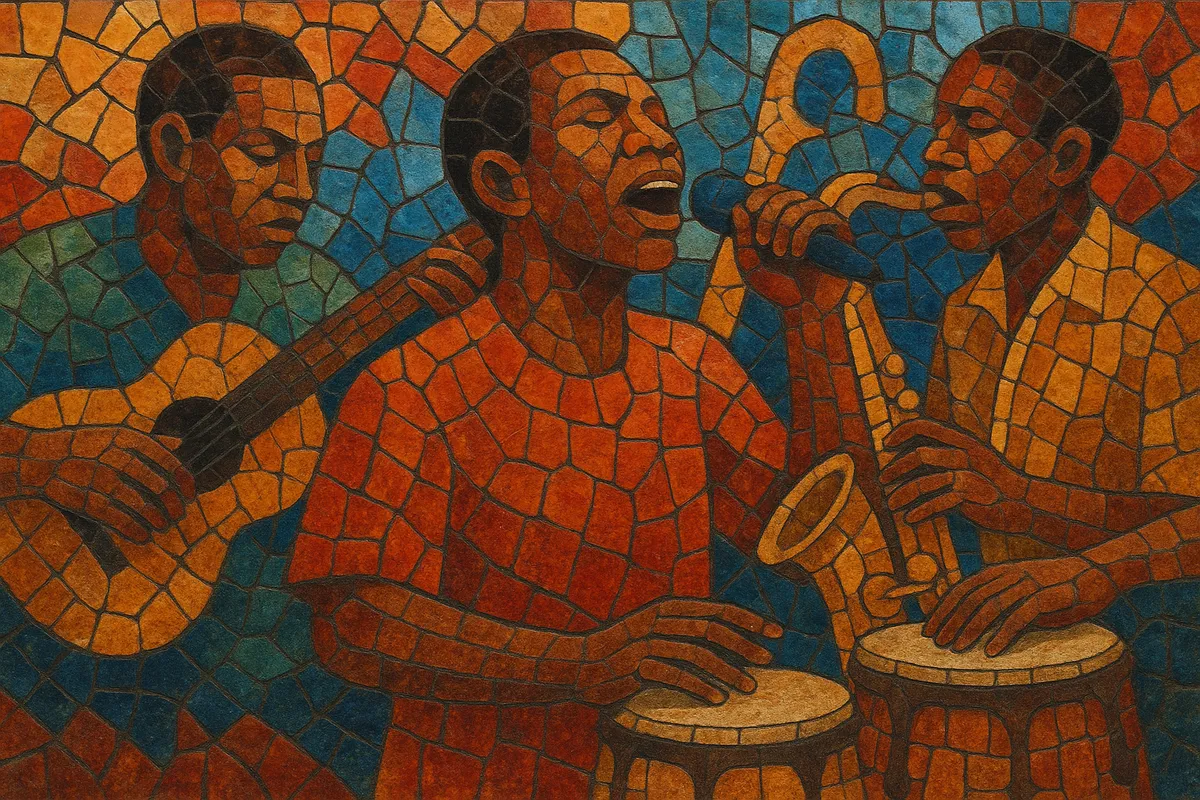Makossa is a popular urban dance music from Cameroon that blends local Duala coastal rhythms with highlife, Congolese rumba/soukous guitar lines, and the brass-driven punch of jazz and funk.
It is characterized by tight, interlocking guitar ostinatos, syncopated bass grooves, bright horn riffs (often led by saxophone), and call-and-response vocals delivered in Duala, French, or Cameroonian Pidgin.
The groove sits in a driving 4/4 meter with a buoyant, forward motion that is at once relaxed and irresistibly dancing, making it a staple of parties and nightclubs across Central and West Africa and the diaspora.
Makossa emerged in the port city of Douala, Cameroon, in the 1950s, drawing on coastal rhythms and dances associated with the Duala people. Early urban bands adapted traditional percussion patterns to modern instrumentation, while exposure to seafaring records and regional radio brought in the sounds of Ghanaian highlife and Congolese rumba/soukous. By the 1960s, electric guitars, bass, and horns had become standard, shaping a distinct urban dance style whose name derives from a Duala word often glossed as “to dance.”
The genre’s international profile exploded in the early 1970s with Manu Dibango’s “Soul Makossa” (1972), which fused makossa’s rhythmic engine with jazz and funk. The track’s hypnotic sax riff and chant became a global hit and a sample source for later pop and hip-hop, positioning makossa as one of Africa’s most globally recognized dance grooves.
Through the 1980s, makossa achieved a polished studio sound in Cameroon and Paris, featuring slick guitar interplay, lush synthesizers, crisp drum kits, and punchy horn sections. Artists such as Moni Bilé, Ben Decca, Dina Bell, and Charlotte Mbango helped codify the modern style, while live bands kept the dance-floor focus with extended breaks and call-and-response choruses.
From the 1990s onward, makossa exchanged ideas with bikutsi at home and with zouk and other diasporic styles abroad. Its rhythms and production aesthetics fed into broader Afropop and later Afrobeats, while classic recordings remain club staples across Central and West Africa. Today, makossa endures as both a heritage sound and a flexible template for contemporary African pop production.


